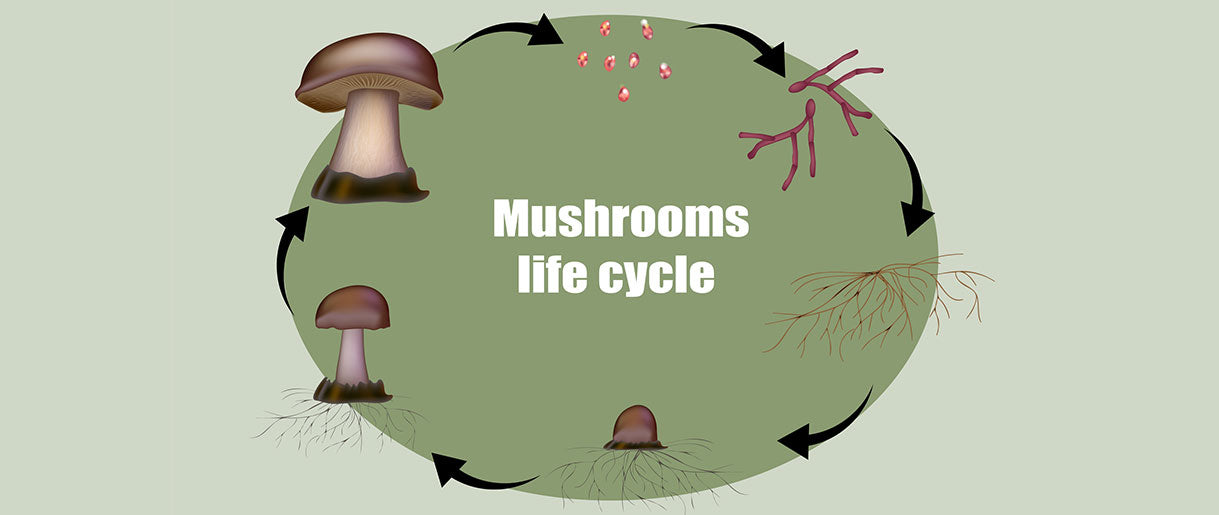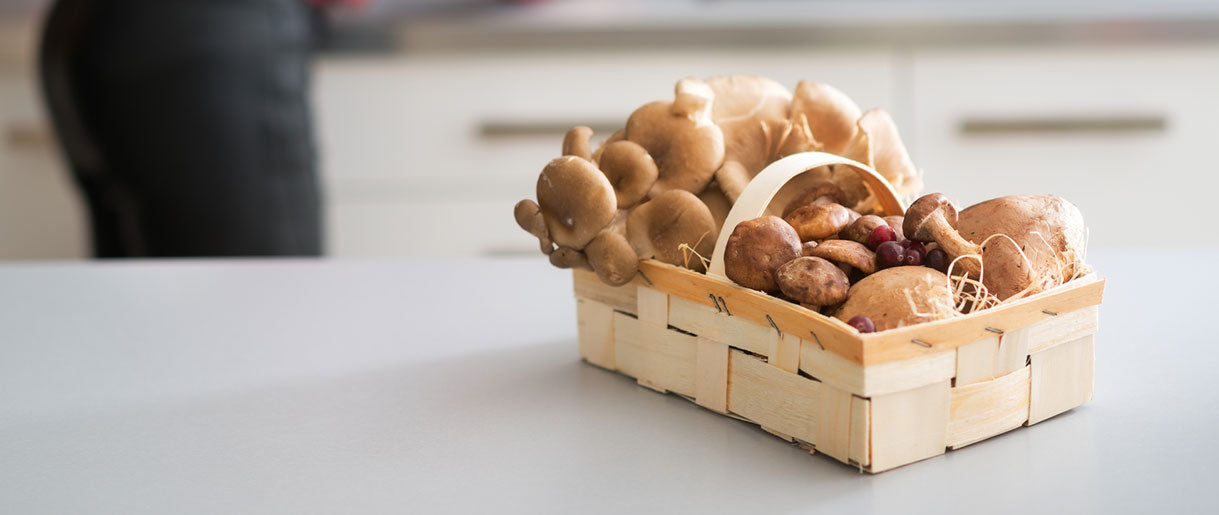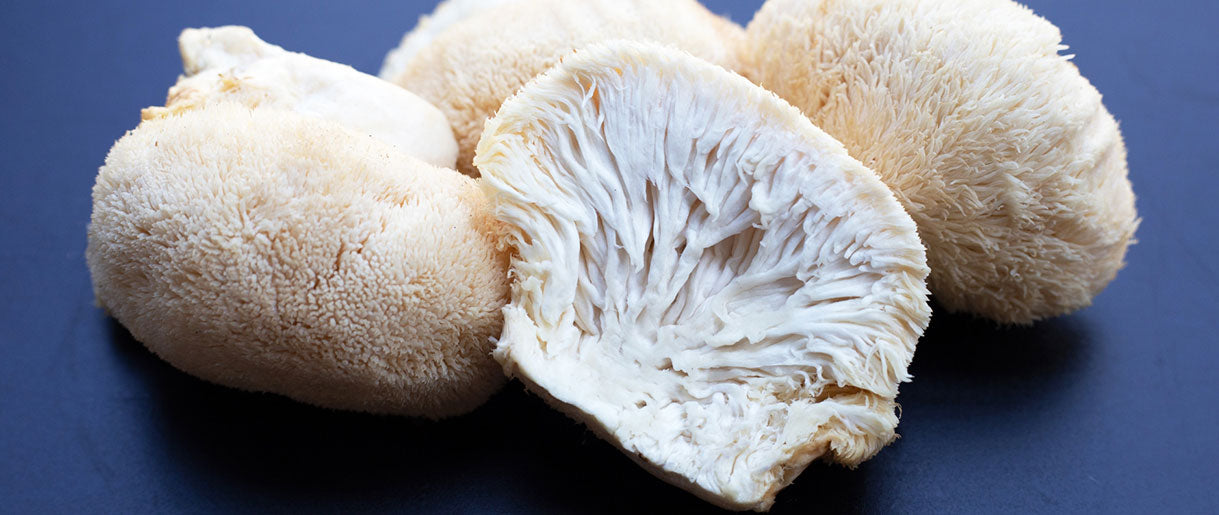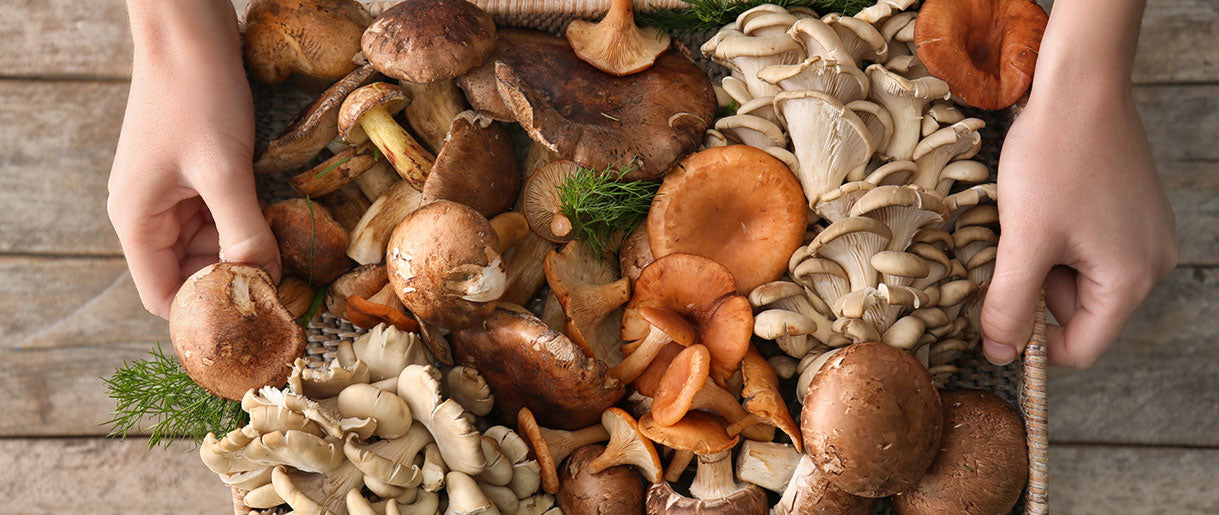The mushroom life cycle is a complex process that involves five main stages. First, spore dispersal occurs when mature mushrooms release spores into the environment. Under appropriate conditions, these spores germinate and develop into a mass of thread-like structures called mycelium.
As the mycelium grows, it absorbs nutrients from the environment, aiding its expansion. The next stage is the formation of primordia, or mushroom pins, which emerge from the mycelium when conditions such as temperature, light, and humidity are suitable. Finally, these primordia develop into mature mushrooms, completing the cycle. Each stage plays a critical role in mushroom propagation and contributes to its vital role in ecosystems, culinary applications, and pharmaceutical industries.
This intricate process has fascinated scientists, mycologists, and nature enthusiasts for centuries. While many of us are familiar with mushrooms as an ingredient in our kitchens or as fascinating organisms on a forest walk, we often overlook their fascinating life cycle before reaching their mature form. The journey from spore to fully formed mushroom is one of nature's most exciting performances, a testament to the complex relationships between these fungi and their environment.
Throughout this article, we will delve deeper into each stage, demystifying the process and uncovering mushrooms' vital roles beyond being a culinary delight. We will explore the various environmental factors that influence this process and discuss the broader implications of mushrooms' life cycle on ecosystem dynamics and our health.
Defining the Fungal Marvel: What is a Mushroom?

In simple terms, a mushroom is the fruiting body of a fungus. It serves as an essential part of the entire mushroom life cycle, playing a crucial role in the propagation of its species.
Born from spore germination, these fruiting bodies appear during favorable conditions, often rising from a more extensive network of fungal cells. This mycelium lives year-round underground or within host substrates. Interestingly, a combination of the fruiting body and mycelium can be used for the culinary and medical benefits of mushrooms.
A Fascinating Fungal Variety
The term 'mushroom' doesn't refer to a single species or type of fungus but encompasses a broad range of fungi that produce fruiting bodies. This includes everything from the widely consumed button mushrooms and oyster mushrooms to the toxic and hallucinogenic varieties. Just as baby mammals aren't representative of the whole animal kingdom, baby mushrooms only provide a glimpse into the diverse world of the fungi kingdom.
While all mushrooms share the common feature of producing fruiting bodies, the size, shape, color, and other characteristics can vary drastically from one species to another. Some are small and delicate, blending into their surroundings, while others are large and striking, drawing attention with their vibrant colors and unusual shapes.
Mushrooms and the Ecosystem: Decomposers and Recyclers
Beyond their fascinating diversity, mushrooms play a vital role in the ecosystem. They are nature's recyclers. A mushroom grows by decomposing organic matter, breaking it down into simpler substances. This decomposition process helps clean the environment and recycles all the nutrients locked away in dead and decaying matter.
As a mushroom cultivator would confirm, when a fungus grows, it feeds on organic material, decomposing it. These organisms are essential in nutrient cycling and contribute to soil fertility. When a mushroom's fruiting body decomposes, it releases nutrients into the soil, making them available for other plants and organisms. This is why mushrooms often thrive in environments rich in organic material, such as dense forests and compost heaps.
The Fascinating Journey: General Life Cycle of a Mushroom

The mushroom life cycle is an intricate process encompassing five stages—spore dispersal, germination, mycelium growth, primordia formation, and mushroom development. Each stage is a vital part of the journey, turning a microscopic spore into a mature fruitbody.
Stage 1: Spore Dispersal—The Seed of a New Beginning
The mushroom life cycle starts with spore dispersal. A mature mushroom's cap is a spore-making factory. It holds thousands, sometimes millions, of tiny spores lighter than air. On a windy day, the fruit body releases spores into the environment. This is the mushroom's way of ensuring its offspring spread far and wide.
These spores, each carrying the genetic material of the parent mushroom, are ready to start producing mushrooms if they land in an ideal environment and find a genetic match.
Stage 2: Germination—A Tiny Thread to Life
If a spore finds a moist and nutrient-rich environment, it germinates. The germination process in the mushroom life cycle involves the development of hyphae, which are fine threads of cells.
This germination phase resembles how a seed sprouts when planted in the ground. However, in mushrooms, the spore doesn't sprout a young mushroom. Instead, it begins to grow hyphae. These hyphae can only be seen with a microscope as they are too tiny to be noticed by the naked eye.
Stage 3: Mycelium Growth—The Silent Expander
The growth stage of the mushroom life cycle is when the individual hyphae form a network known as the mycelium network or mycelium colony. This mycelium feeds on organic material and decomposes organic matter. It releases digestive enzymes to break down organic material into simpler substances the fungi grow on.
As part of the mushroom life cycle, mycelial expansion occurs underground or within a food source, invisible to the naked eye. In this stage, the mushroom mycelium, using enzymes, turns dead and decaying matter into rich soil, providing nutrients for thriving plants.
Stage 4: Primordia Formation—From Knots to Baby Mushrooms
As the mycelium continues to grow and expand, certain environmental cues, such as a drop in temperature or increased humidity, can trigger the formation of hyphal knots. These knots, also known as primordia, arethe initial stage of fruitbody selection and the first step towards becoming a mature mushroom that we can see with the naked eye. This stage in the mushroom life cycle is known as primordial formation.
Stage 5: Mushroom Development—The Final Flourish
The final stage in the mushroom life cycle is the development of the mature fruitbody, or the mushroom fruiting body as it's often called. The hyphal knots develop into a mature mushroom, complete with a stem, a mushroom cap, and gills or pores beneath the cap where new spores are produced. This is when a mushroom begins to look like the mushrooms we're familiar with.
The mushroom life cycle doesn't end with the development of the mature mushroom, though. The mature mushroom will release its spores, starting its life cycle anew.
Why Does Understanding the Mushroom Life Cycle Matter?
Each stage of the mushroom life cycle plays a vital role in ecosystems, medicine, and food industries. By decomposing organic matter, mushrooms contribute to the recycling of nutrients, which aids plant growth and soil fertility.
Their ability to strengthen the immune system has been harnessed in medicine, and they form a part of many delicious recipes—a good example is the Lion's mane mushroom recipes. This understanding can benefit gardeners, cooks, and anyone interested in the natural world.
A deep dive into the mushroom life cycle can reveal the fungi's magic—they are more than just a food ingredient or a charming forest inhabitant. They are an essential part of our world.
An In-depth Study: Unraveling Each Stage of the Mushroom Life Cycle

The mushroom life cycle is a fascinating journey that unfolds through several stages. Let's examine each of these stages in more detail.
The Launch of Life: Spore Dispersal
Spore dispersal is the first stage of the mushroom life cycle. But where do these mushroom spores come from? A mature mushroom fruiting body is packed with spores produced through sexual reproduction. Depending on the species, these spores are contained in the gills, tubes, or teeth of the mushroom.
When conditions are right, the mushroom undergoes spore release, sending these microscopic propagules into the environment. Factors such as wind, rain, and even the movement of animals can influence spore dispersal. The goal is to get the spores as far away as possible from the parent mushroom to colonize new areas.
Tiny Beginnings: Spore Germination
Once a spore lands in a suitable environment, the spore germinates. It absorbs water from its surroundings and begins to grow. Germination requires an adequate temperature range, sufficient moisture, and a food source.
The process of germination in mushrooms is an act of sexual reproduction. The spore contains one of two types of reproductive nuclei, and germination will only proceed if it encounters a genetically closely related spore of the opposite sex. Once fertilization occurs, the two nuclei combine to form a zygote, marking the start of a new mycelium and the next generation of mushrooms.
The Invisible Web: Mycelium Growth
Following germination, the spore develops into a network of hyphae, creating mycelium. This mycelium, often unseen as it grows beneath the surface or within a food source, is the heart of the mushroom. It's here where much of the metabolic activity occurs, including the breakdown of organic material into nutrients.
The mycelium protects itself from predators and harsh environmental conditions with protective enzymes. The growth of the mycelium depends on various factors, including food availability, temperature, moisture, and pH of the environment.
The Birth of a Mushroom: Primordia Formation
When conditions are just right, the mycelium enters the next stage of the mushroom life cycle and forms hyphal knots. These hyphal knots are the initial stage of the development of the mushroom fruiting body and appear when there's a change in temperature, light, or oxygen levels. The knots are compact, organized bundles of hyphae that will start to form a mushroom cap and stem under the right conditions.
The Final Flourish: Mushroom Development
After the hyphal knot formation, the hyphal knots start growing into a recognizable mushroom structure. They differentiate into specific parts of the mushroom, such as the cap, gills, and stem. During this stage, the mushroom can increase in size rapidly, often breaking the ground surface or substrate in which the mycelium has been growing.
As the mushroom matures, it will begin to produce its spores, marking its readiness to start a new cycle of life cycles. This stage's success can depend on light, temperature, and humidity.
In the Hands of Nature: Role of Environmental Factors in the Mushroom Life Cycle

Mushrooms, like all living organisms, depend on specific environmental conditions to grow and reproduce. For example, when growing Lion's mane at home, these conditions have to be met for high-quality mushrooms.
Among these, temperature, moisture, and substrate are of crucial importance. These factors influence the successful propagation of spores and the growth and development of the mushroom. Let's delve deeper into these environmental factors' role in the mushroom life cycle.
Temperature: The Silent Regulator
Temperature plays a significant role in the mushroom life cycle, acting as a silent regulator. From the moment a spore germinates to the development of a mature mushroom, temperature is constantly at play.
Each species of mushroom has a specific temperature range that optimizes its growth. For example, the temperature you need to grow Reishi mushrooms may differ from the ideal temperature for Lion's mane mycelium.
For instance, during the mycelium growth phase, a lower temperature might slow down the rate of expansion. On the contrary, a temperature too high could potentially kill the mycelium. Furthermore, temperature changes can trigger the mushroom to start forming the primordia and eventually develop into a mature mushroom.
Moisture: The Life-Giver
As with temperature, moisture is a critical environmental factor influencing the mushroom life cycle. The release of spores, germination, and mycelium development requires a specific moisture level.
Mushrooms consist primarily of water and rely on a moist environment to prevent dehydration. Insufficient moisture can lead to shriveled, underdeveloped mushrooms, while excessive moisture can cause the mushrooms to become waterlogged and potentially rot.
Substrate: The Growth Medium
The substrate, or the material in which mushrooms grow, is essential to the mushroom life cycle. It provides the necessary nutrients for the mushroom to grow. Different mushroom species prefer different substrates, ranging from decaying wood and organic matter to specific soil types.
The quality of the substrate affects the health of the mycelium and, thus, the resulting mushroom. An ideal substrate will be rich in nutrients, maintain an appropriate moisture level, and provide a stable environment for the mushroom to grow.
Environmental Changes: A Delicate Balance
Changes in these environmental factors can significantly impact the mushroom life cycle. A sudden drop in temperature, a decrease in moisture, or a nutrient-depleted substrate can all inhibit the growth and development of mushrooms. Understanding the effects of these variables can help in cultivation efforts, allowing growers to optimize conditions for the best mushroom growth and productivity.
Beyond The Cycle: The Multifaceted Importance of the Mushroom Life Cycle

The mushroom life cycle is a miraculous journey of growth and transformation, but its significance extends far beyond the stages of its development. The role of mushrooms in our ecosystem, their use in culinary applications, and their contribution to the field of medicine and pharmaceuticals make understanding the mushroom life cycle all the more critical.
The Ecosystem Engineers
Mushrooms, and fungi in general, are often hailed as 'ecosystem engineers.' They play a vital role in nutrient cycling and organic matter decomposition.
As mushrooms grow, they break down complex organic materials into simpler compounds, enriching the soil and making these nutrients available for other organisms. This process is a fundamental component of the earth's carbon cycle.
Furthermore, some mushrooms form symbiotic relationships with plants, aiding nutrient uptake and promoting plant health. Therefore, the mushroom life cycle, in essence, supports the broader ecosystem life cycle.
The Culinary Delight
From a culinary perspective, the mushroom life cycle provides various edible stages to harvest and consume.
Young, immature mushrooms—called 'buttons'—are picked for their tender texture and mild flavor. More mature mushrooms offer a wider array of tastes and textures, from the meaty richness of portobellos to the delicate, velvety mouthfeel of oyster mushrooms.
Understanding the life cycle of mushrooms can also enable better cultivation practices, ensuring a steady supply of these gastronomic delights throughout the year.
The Medicinal Marvels
Mushrooms hold a unique place in the field of medicine and pharmaceuticals. Several species contain compounds with powerful health benefits, ranging from immune-boosting properties to anticancer effects.
For instance, the Lion's Mane mushroom improves memory and promotes neurological health, while the Reishi mushroom is known for its immune-modulating effects.
Moreover, research into the mushroom life cycle can facilitate targeted cultivation of medicinal mushrooms, aiding the advancement of natural and integrative medicine.
FAQs About Mushroom Life Cycle
What Are The Environmental Threats To The Mushroom Life Cycle?
Environmental threats to the mushroom life cycle are diverse, encompassing natural and human-induced factors.
- Climate Change: Changes in climate, such as increased temperature and altered precipitation patterns, can disrupt the ideal growing conditions for mushrooms. For instance, increased temperatures could speed up the life cycle, leading to premature spore release, while extended periods of drought can impede spore germination and mycelium growth.
- Pollution: Chemical pollutants, particularly heavy metals in the soil, can be absorbed by mushrooms, inhibiting their growth and potentially making them toxic. Similarly, air pollution can impact spore dispersal and mycelium health.
- Habitat Destruction: Many mushrooms rely on specific habitats and substrates to grow. Deforestation, urban development, and changes in land use can disrupt these habitats, posing a significant threat to the survival of certain mushroom species.
- Overharvesting: While some mushroom species can withstand regular harvesting, overharvesting may threaten others. Excessive picking of mushrooms, particularly before they have a chance to release their spores, can severely affect their ability to reproduce and maintain their populations.
- Invasive Species: Introducing non-native plants, animals, or fungi can disrupt local ecosystems and create competition for resources, posing a threat to native mushroom species.
Each of these factors can significantly impact the mushroom life cycle, potentially affecting the ability of mushrooms to germinate, grow, and reproduce effectively. Therefore, preserving natural habitats and mitigating pollution are critical steps in protecting the life cycles of diverse mushroom species.
What Is The Average Lifespan Of A Mushroom In Its Fruiting Stage?
The lifespan of a mushroom during its fruiting stage can vary significantly depending on the species, environmental conditions, and availability of nutrients. In general, the fruiting stage, which is the stage during which the mushroom produces and releases spores, lasts anywhere from a few days to a couple of weeks.
Some common edible mushrooms, like button mushrooms (Agaricus bisporus), may only last a few days to a week in their mature fruiting stage. Wild mushrooms, on the other hand, could potentially last a bit longer, perhaps a week or two, if conditions are favorable.
However, it's important to note that this period is just a fraction of the mushroom's life cycle. The mycelium, the root-like structure of the mushroom, can live for many years, producing numerous fruiting bodies throughout its lifespan. So, while the visible part of the mushroom we're familiar with may seem short-lived, the organism itself can persist for much longer.
Do Different Species Of Mushrooms Have Different Life Cycle Durations?
Yes, different species of mushrooms indeed have different life cycle durations. The time it takes for a mushroom to complete its life cycle—from spore germination to developing a mature fruiting body—can vary considerably between species.
Several factors can contribute to these variations. One primary factor is the mushroom species itself. Some mushrooms, like the common white button mushroom (Agaricus bisporus), can complete their life cycle in just a few weeks. Others, such as the Shiitake mushroom (Lentinula edodes), might take several months or even a year for the spore to mature fruiting body.
Environmental conditions also play a significant role in determining the duration of a mushroom's life cycle. The availability of nutrients, temperature, moisture, and light can all impact the speed at which a mushroom grows and develops. For instance, in optimal conditions, Oyster mushrooms (Pleurotus ostreatus) can grow from spawn to harvest in weeks.
Remembering that the fruiting body we typically think of as a "mushroom" is just one part of the organism. The underground network of mycelium can persist for much longer—potentially many years—and produce multiple rounds of fruiting bodies.
Key Takeaways
As we reach the end of our journey into the captivating world of mushrooms, it's clear that understanding the mushroom life cycle holds significant importance—far beyond just the growth of the mushroom itself. This seemingly simple organism carries out a complex and fascinating lifecycle that impacts not just the forest floor but also our kitchen tables and medicine cabinets.
We've delved into the heart of what makes a mushroom, journeying from the initial dispersal of spores to the growth of the mycelium network and the ultimate formation of the mushroom fruiting body. We've seen how environmental factors like temperature, moisture, and substrate availability can significantly influence each life cycle stage.
We've also realized the crucial role of the mushroom life cycle in supporting our ecosystems, culinary arts, and medicine. From decomposing organic matter and maintaining ecological balance to providing nutritious food and potent medicinal compounds, the mushroom's life cycle is intertwined with our own in many significant ways.
We hope this exploration has instilled in you a newfound appreciation for the intricacies of the mushroom life cycle. We'd love to hear from you if you have any thoughts, comments, or questions about this topic. Leave a comment below, and let's continue this fascinating discussion together.









Let Us Know Your Comments